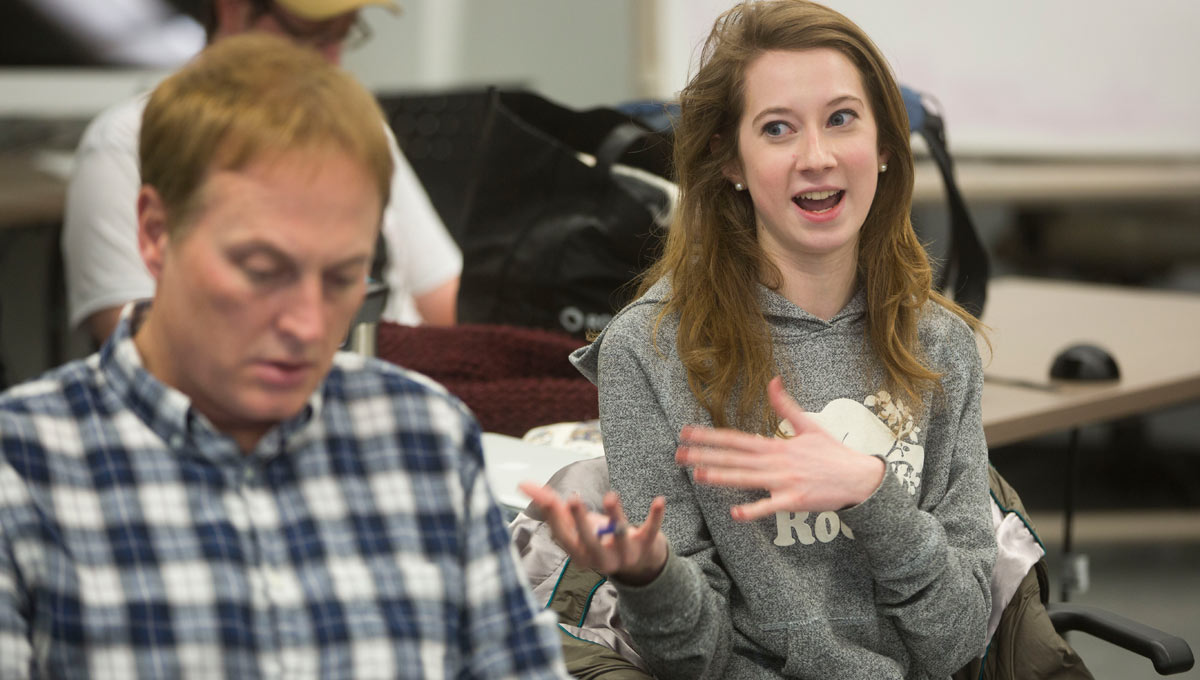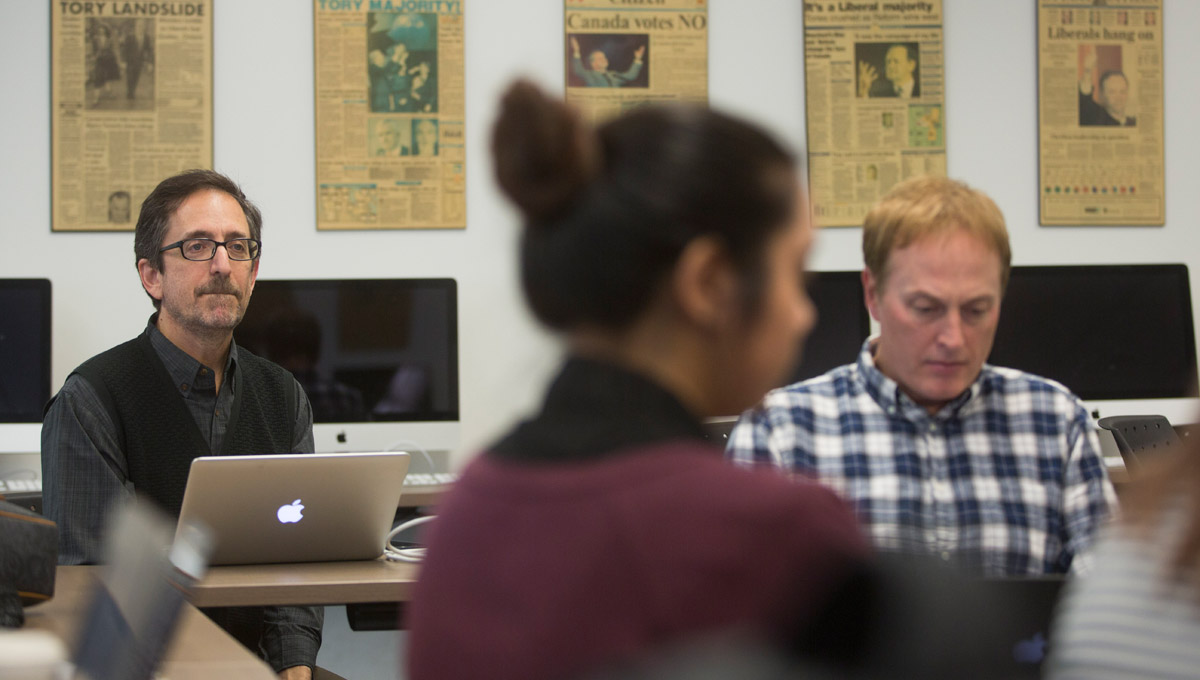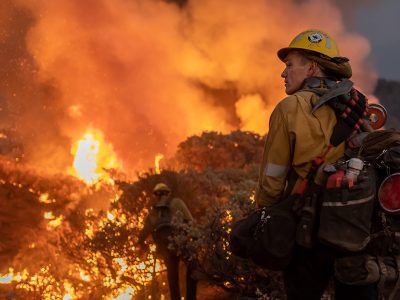By Susan Hickman
Photos by Chris Roussakis
It’s been the job of journalists to explain science, but in the 21st century world of light-speed media, the shrinking stable of specialized professional journalists threatens to erode an already limited public appreciation of the subject. That’s why it’s important to find new ways to communicate and encourage scientists to step up and talk about their findings.
So says the respected former New York Times staff reporter Andrew Revkin, a prolific science and environment writer, author and songwriter.
The award-winning blogger for the Times’ Dot Earth delivered Carleton’s 2016 Discovery Lecture on Feb. 25 and visited Prof. Kathryn O’Hara’s science journalism class to talk with students who hope to become journalists, communicators or environmental scientists.

A Senior Fellow for Environmental Understanding at Pace University’s Academy for Applied Environmental Studies, Revkin has been writing about diverse environmental topics for 32 years – from the assault on the Amazon rainforest and changing conditions in the Arctic to the troubled relationship of climate science and politics and the environmental impacts of rising human populations and the appetite for resources.
Holding up a worn March 1985 copy of Science Digest, Revkin pointed to the magazine’s prominent tobacco and alcohol advertisements before addressing the galloping evolution of communicating to the public what is going on in the environment.
“My message to students in science and in journalism is to look at the landscape of ways to communicate and to find ways to clarify and to reduce confusion,” said Revkin. He told journalists: “Make sure you understand your audience,” and to science students: “Don’t rely on a journalist to tell your story. Science and environmental reporting is more disposable. There are fewer of us out there and we have less time.”
Revkin added: “It’s hard to say which is changing more quickly, the global environment or the technologies and techniques that are used to convey the state of the world to the public.”
Universities, agencies and funders have an increasing responsibility, he said, to steer students to the online environment, and to help them filter the narrow social media bubbles they experience.

New York Times science reporter and environment guru, Andrew Revkin
As old information gatekeepers – experienced broadcasters, newspaper reporters and trusted TV anchors – lose influence, innovative communicators can fill the gaps. It might be a funded website that employs enterprising journalists to investigate climate issues, such as the American Inside Climate News, the collective intelligence of a network of bloggers expressed through the Twitter hashtag tool or collaboration between a government agency, an engineer, an animator, a blogger and/or the media.
Eric Freedman, director of the Knight Center for Environmental Journalism at Michigan State University, also attended O’Hara’s class via Skype.
Freedman, who continues to write for a wide variety of publications on the environment, public affairs and other topics, advised journalism students on looking for relevant information in a scientific report.

“Researchers give lots of material,” he said. “They can explain technical aspects of studies, but ask them what else they are working on. And contact government ministries or agencies involved in the issue, independent experts who are researching the same issue but not invested in the study, and ordinary people and community advocate groups who are affected by decisions.”
O’Hara admitted there aren’t many environmental beats at news organizations these days.
“This is the first time we have concentrated on environmental science reporting, apart from climate science. Today, the students got to work with people who understand the components of good environmental journalism.”
Twenty-two-year-old Jen Halsall, a fourth-year journalism student in O’Hara’s class who confesses to a passion for environmental reporting, said writers like Freedman and Revkin “bring the science to life. It’s right up my alley and I hope to get a more nuanced perspective on environmental reporting.”
Amy Thatcher, 22, a fourth-year journalism student minoring in biology, said she found it valuable to hear Freedman’s perspective on what to include when writing a science story, as she hopes to pursue a career in science journalism.

Students engaged in a lively debate in Prof. Kathryn O’Hara’s science journalism class
Meghan McGlone, a 21-year-old environmental science student in her fourth year, one of science students to sit in on the special class, is aware of how the world has changed for scientists in the past few decades.
“Thirty years ago, you reported your findings and let the science speak for itself. But now, you might have to become an advocate for a chemical company that is funding you. You certainly have to advocate for your own science and research.”
McGlone, who did a practice interview with a couple of O’Hara’s journalism students during the session, said it was interesting to look through their lens of how they try to communicate scientific information.
“I want people to know what I’m talking about. I want to see enthusiasm, so I need to get my information across in layman’s terms.
“I hope this kind of interdisciplinary work happens more often,” she added.

Friday, February 26, 2016 in Environment and Sustainability, Journalism and Communication
Share: Twitter, Facebook



